Creating a new story for Ullswater
Children bring something that we adults just can’t. Their way of seeing, their ideas and their concerns are all really important. So, as part of the Watershed project, which brings many perspectives on the Ullswater Valley together through art, it was essential to involve children from the Valley.
The children’s artwork will be shown at the exhibition in Glenridding Village Hall (July 19, 20 and 21, 10am – 5pm). Then it will return to the school to be mounted on a wall.
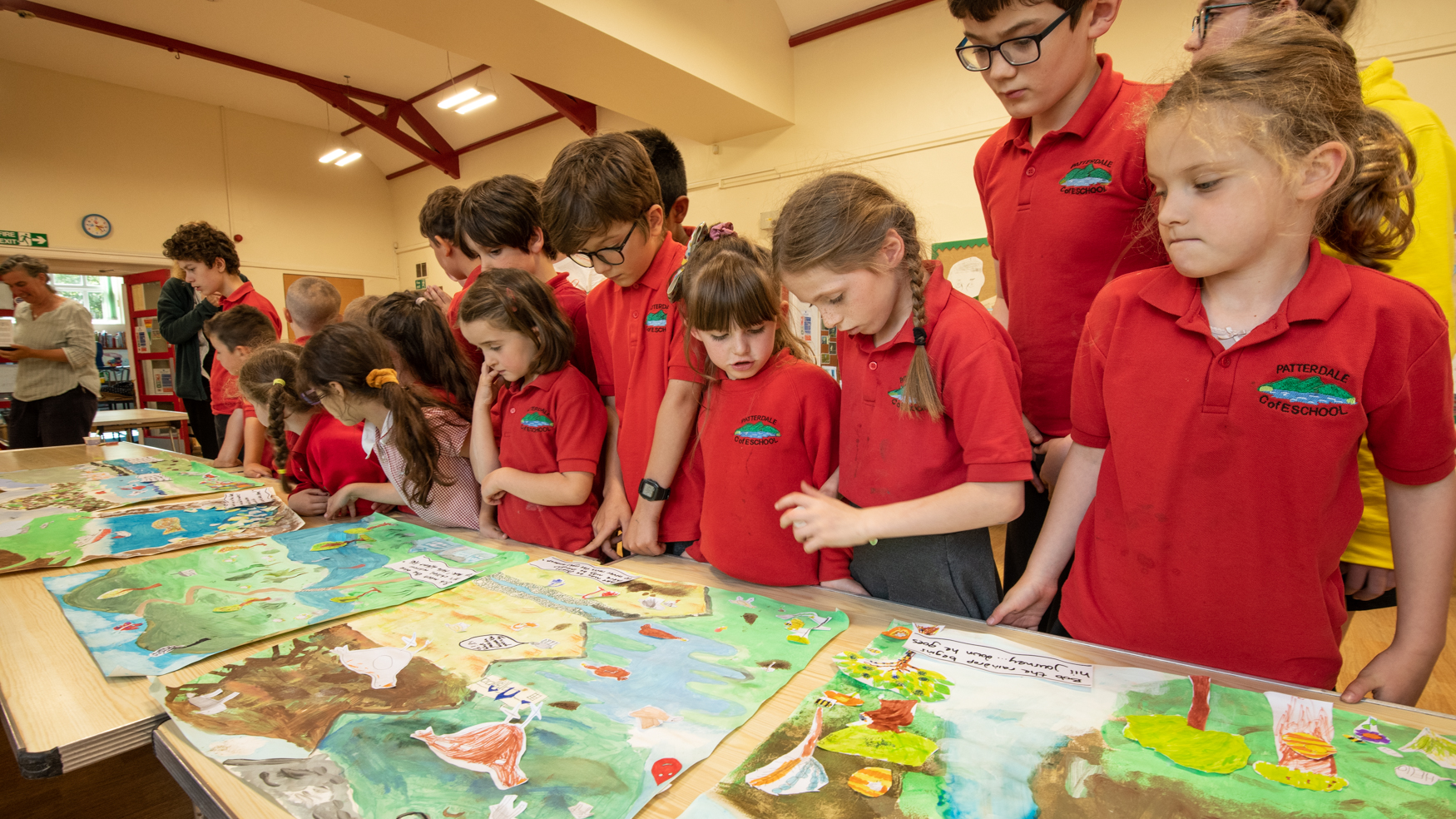
The children’s 7-part illustrative panel tells the story of The Marvellous Journey of Bob the Raindrop from the top of Place Fell, down into the lake, and all the way to Penrith. It allows us all to travel through a variety of habitats and consider what’s important in this place.
Harriet, Rob and Kate – three of the five artists on the Watershed team – started the day by taking the children outside. Lined up on a bridge straddling Goldrill Beck, they were able to look around them and discuss the different elements of the valley, and how they link up. They imagined what the fells, the sky, the water and other elements might be like if they were characters, and began to build the foundation for their story.
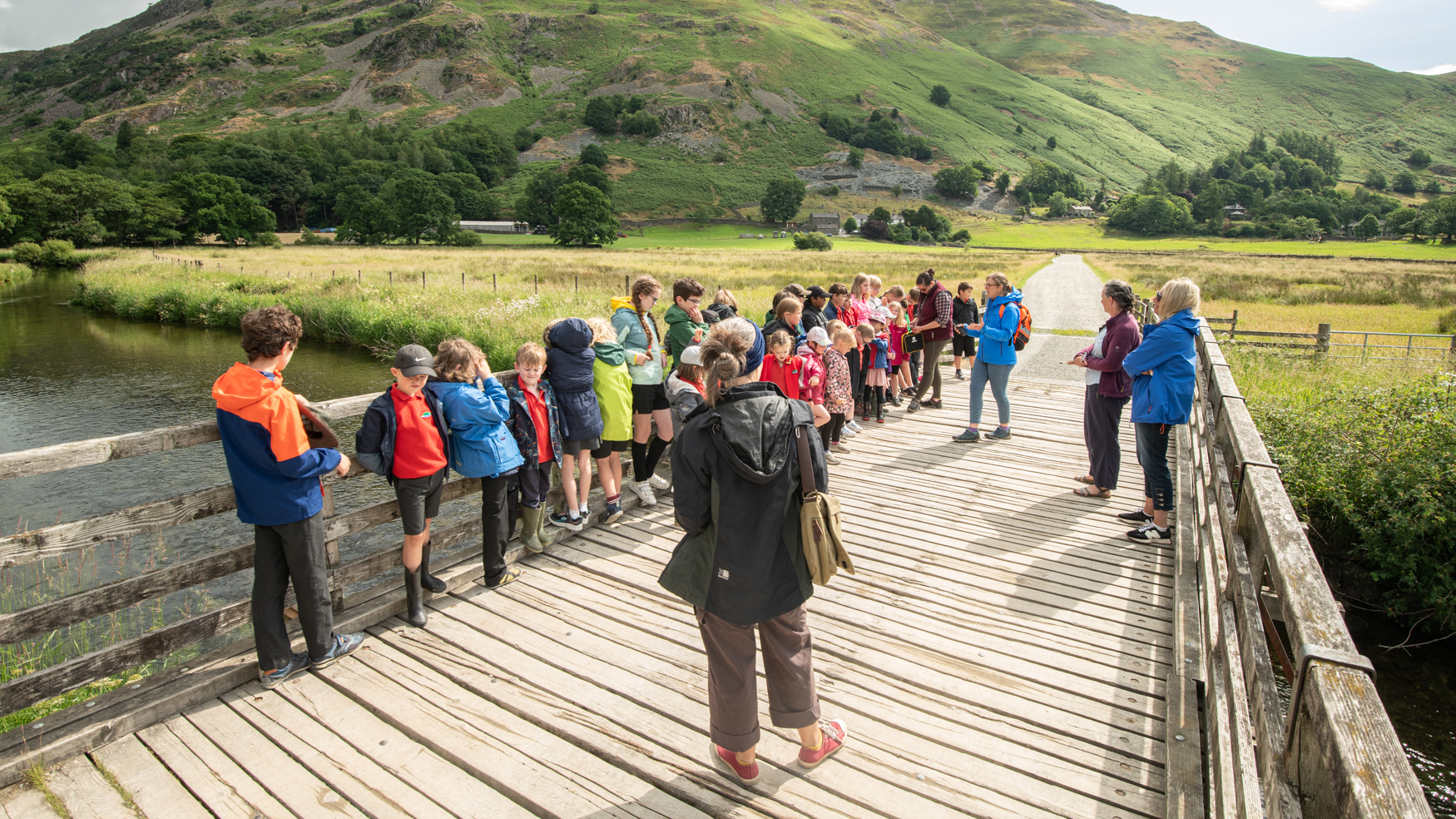
The children are familiar with this valley: for most of them, it’s where they live. Most of them have walked to the top of the fells that rise above the lake, many of them come from farming families, all their hands went up when we asked who swims, paddles or sails here. They were able to weave all these experiences in; they shared their concerns about litter in the valley; they have experienced floods; they know the vagaries, and the impact of weather. We also talked about things that aren’t so easily seen, like the phytoplankton in the lake. Huge thanks to Ellie Mackay from UKCEH (Centre for Ecology and Hydrology) for helping Kate to explain this microscopic world to the children … it was easy to go from discussions about plankton to ideas of plankton-parties under water and the discussions that a water drop might have with schelly fish.
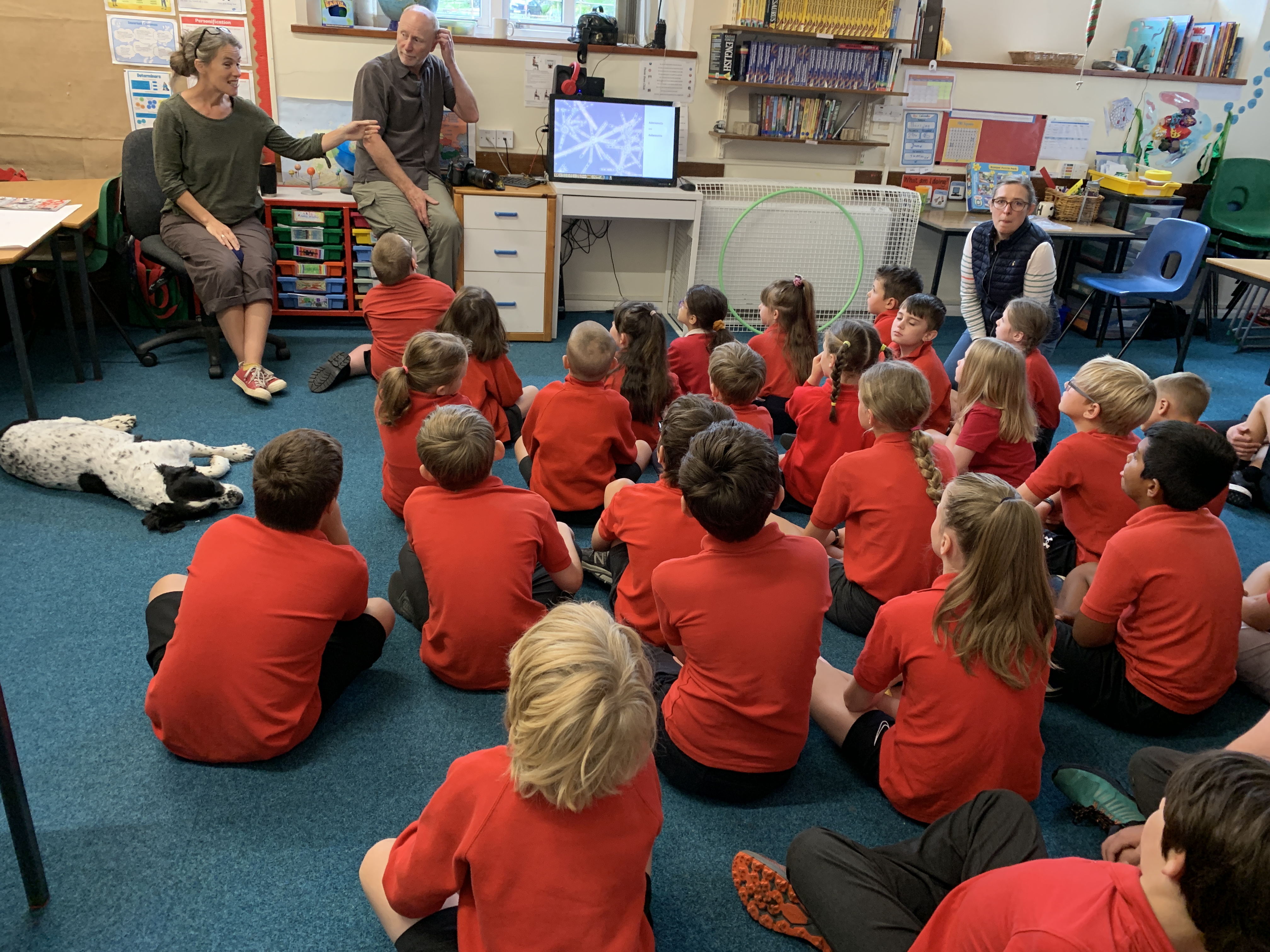
The work that the children has created, deciding every step of the way what they wanted it to be, brings together a delightfully playful element with a narrative of a place that is populated by many different species – the panels include birds, butterflies, fish, sheep, hens and dragonflies as well as people. And it offers some heartfelt observations – that this place is precious, and fragile, and needs to be cared for.
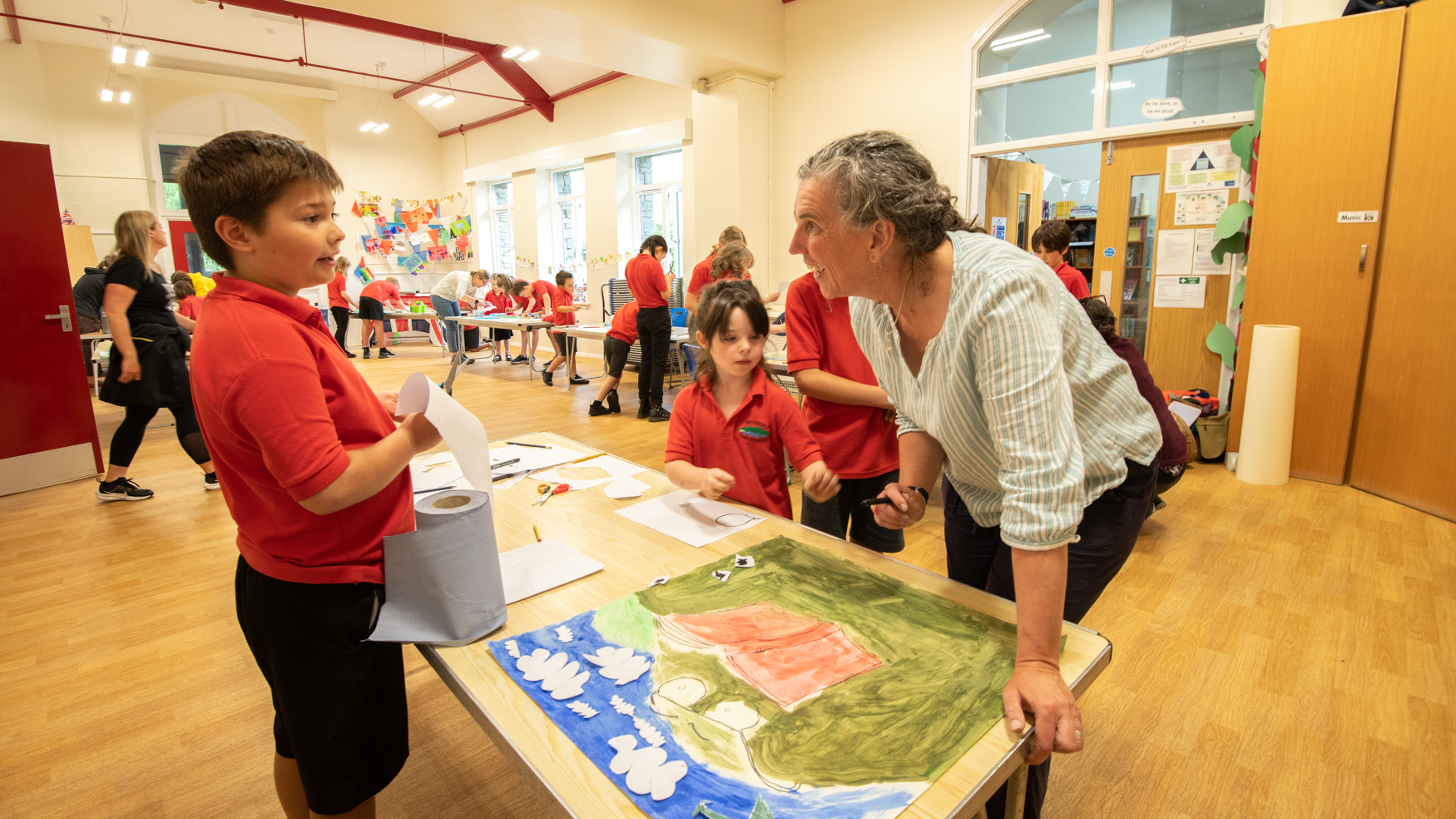
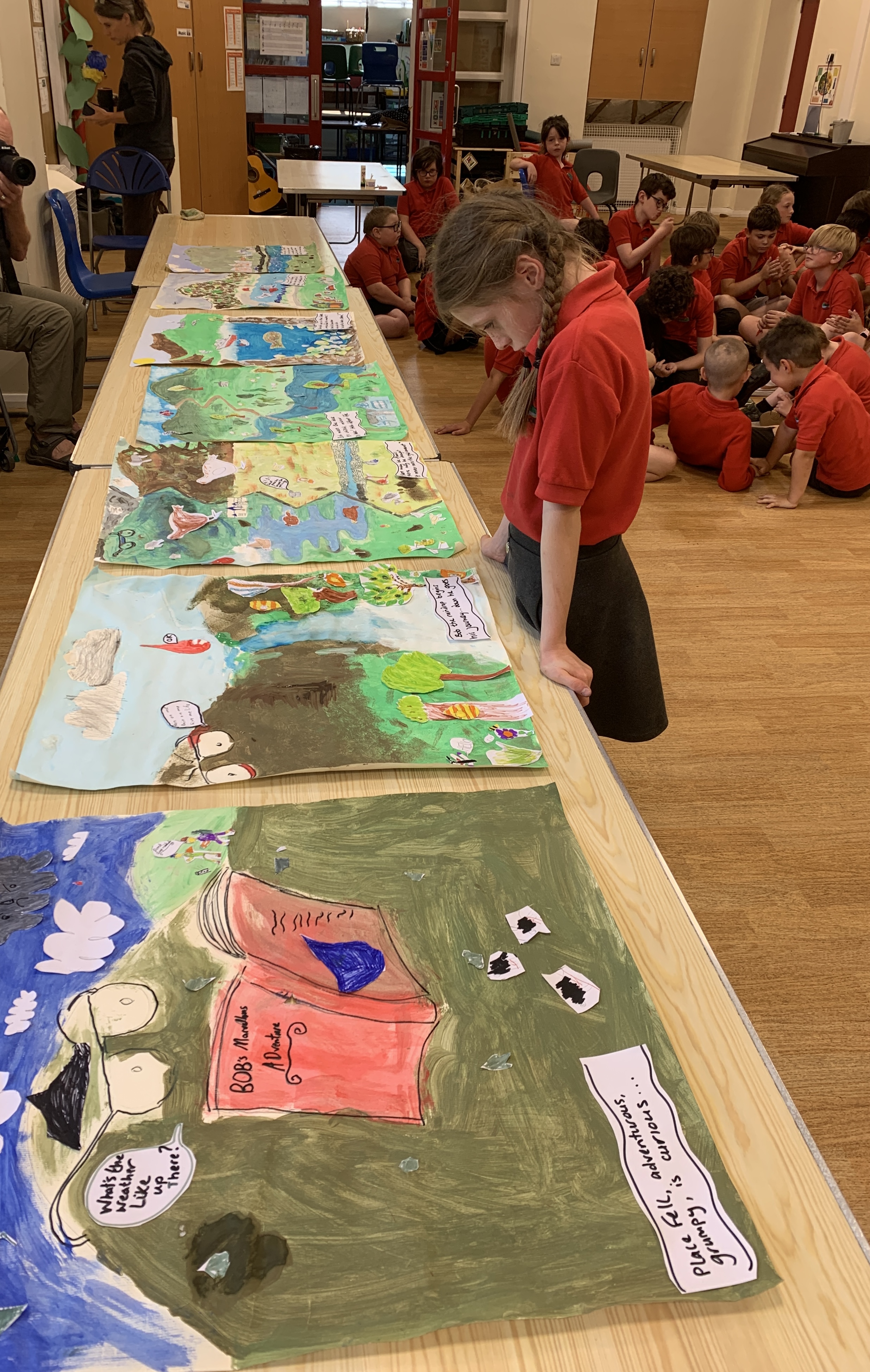
‘This is one of those pieces of work that just makes me smile,’ said headteacher, Nicky Steels. The smile comes not just from the finished piece, but the process that led to it. From choosing the central character of the story, to democratically selecting a name, and then working in 5 multi-age groups, the 34 children worked happily, energetically and respectfully. Quite aside from the piece that was created, what the day revealed to us all (and not for the first time) was the remarkable nature of relationships here, where a school is like a family, and where families connect with one another.
These connections are part of life in Cumbria and we felt it too – Rob and Harriet knew some of the children from their work with local farmers over the years, and Kate knows one of the teachers, whose mother taught Kate in primary school. These links, and ripples of relationship, help to knit a community together not just in a valley, but across the fells. The need for a strong community has been expressed by many of the people we’ve interviewed as part of this project as an important aspect of living well, and shaping a good future together. A strong, committed, and connected community is vital when it comes to caring for the valley.
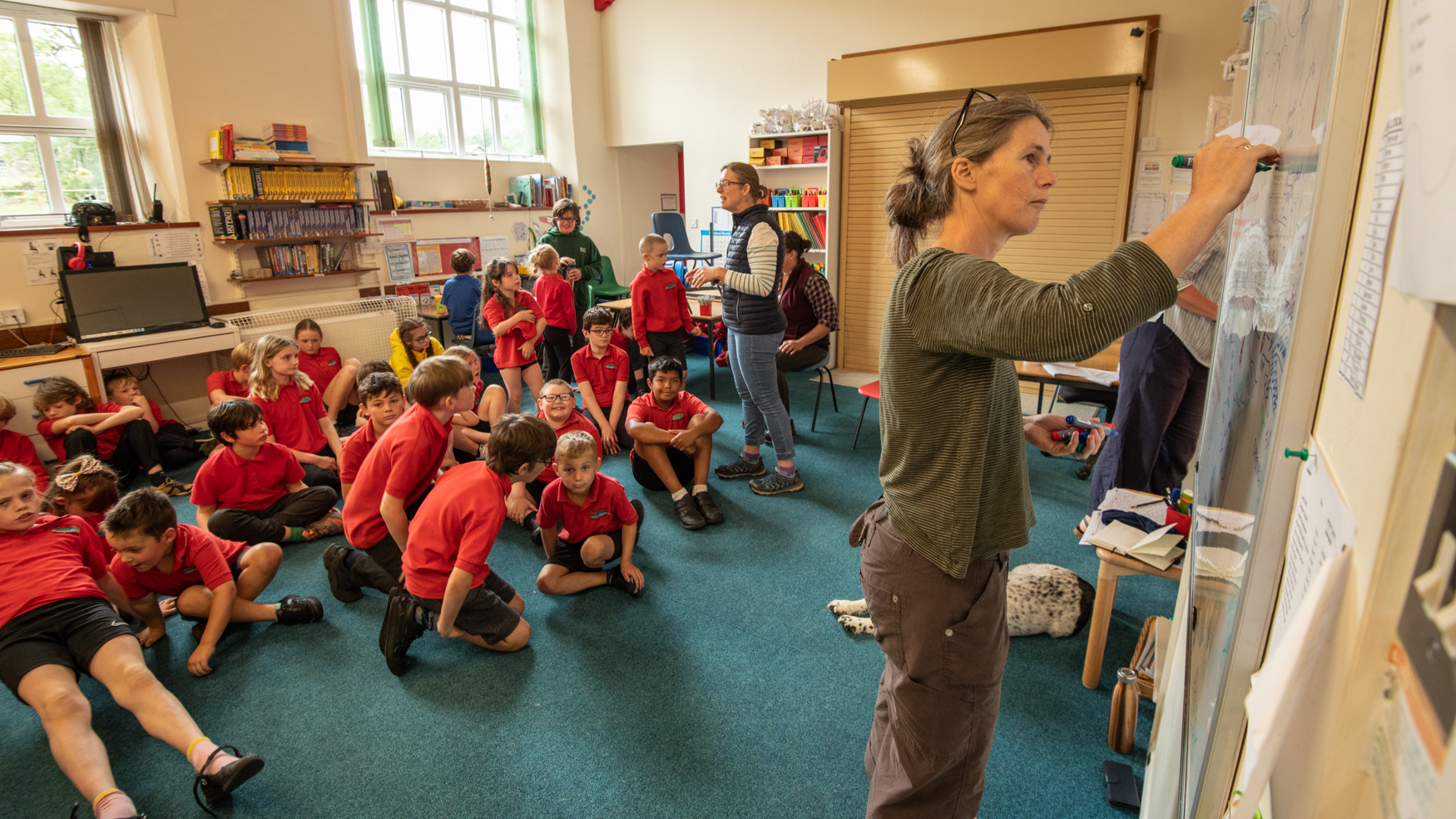
For more on Watershed, click this link.
Exhibition : Glenridding village hall, July 19, 20 and 21, 10am – 5.30pm.